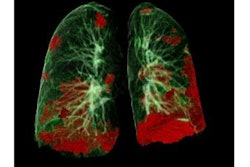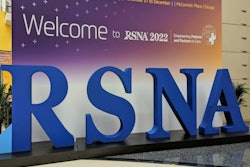
Current guidelines on CT lung cancer screening from the U.S. Preventive Services Task Force (USPSTF) may not cover many current and former smokers who remain vulnerable to developing lung disease, a study published July 28 in JAMA Oncology has found.
The USPSTF's current recommendation focuses mostly on people between the ages of 50 and 80 who are long-term current smokers, or who quit recently. For example, it doesn't cover former long-term smokers if they quit 15 or more years ago, or even current smokers if they have smoked for 20 pack years or less.
That's leaving out a lot of people who might still be at risk of lung cancer but who aren't eligible for low-dose CT (LDCT) screening, noted a team led by Dr. Charles Faselis of the VA Medical Center in Washington, DC. And this gap could be dangerous, the group wrote.
"The findings of this cohort study suggest that there is a high risk of lung cancer among smokers for whom LDCT screening is not recommended," Faselis and colleagues noted.
Last year, the USPSTF amended its lung cancer screening recommendation, lowering the starting age and reducing the length of pack-year smoking required. But the updated recommendation still doesn't include large groups of individuals:
- Adults between 50 and 80 who are former heavy smokers (more than 20 pack years of smoking) who quit more than 15 years ago
- Current smokers who aren't classified as heavy smokers (less than 20 pack years of smoking)
Therefore, Faselis and colleagues sought to investigate lung cancer risk among these two groups not covered by the USPSTF screening guidance via research that used data from the Cardiovascular Health Study from the National Heart, Lung, and Blood Institute. It included information from 4,279 people with no cancer but with baseline data on pack-year smoking history and duration of stopping smoking. The mean age of the 4,279 individuals was 72.8 years; 15.5% were Black Americans, 83.8% were white, and 0.7% were of other race or ethnicity.
The researchers found that, despite not falling under the USPSTF screening guidelines, the individuals they studied had more than 10 times the risk of incident lung cancer compared with never-smokers, and 18% to 53% higher risk of all-cause death.
| Morbidity and mortality for individuals outside USPSTF CT lung screening guidelines | |||
| Outcome | Never smokers* (control) | Nonheavy smokers | Former heavy smokers with 15 or more years of smoking cessation |
| Incident lung cancer | 1 | 10.06 | 10.22 |
| All-cause death | 1 | 1.53 | 1.18 |
The authors conceded that the absolute risk of lung cancer in the population they studied remains small, at 5%. This highlights the need to assess potential harms of annual screening among older smokers, perhaps using machine learning or artificial intelligence (AI) technology.
"[Our] findings ...provide new evidence of a high risk of lung cancer among smokers for whom LDCT screening is not recommended," the group wrote. "These findings suggest that future studies should determine whether annual LDCT screening could reduce lung cancer mortality in these smokers."





















